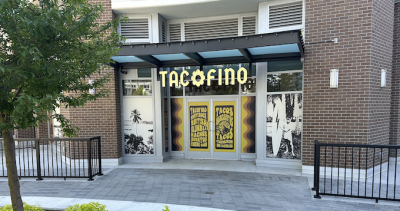Fixed link to Sunshine Coast could be a game changer for communities from Gibsons to Powell River
This fall, residents of the Sunshine Coast will likely find out if their area could become one of the hottest real-estate plays in southwestern B.C.
That’s because a B.C.–based consulting company, R. F. Binnie & Associates, is expected to submit a report to the provincial government on the feasibility of a highway link connecting the Sunshine Coast to the Lower Mainland.
The idea is strongly supported by the chamber of commerce in Powell River, which is the largest community in the region northwest of West Vancouver, stretching from Langdale to Lund. Meanwhile, in a phone interview with the Georgia Straight, the marketing director of Sunshine Coast Tourism, Paul Kamon, called a fixed link a “game changer” for the region.
“It would open up a huge amount of territory to development,” he said.
He made the remark in advance of the annual Sechelt Arts Festival, which runs from Thursday (October 13) to October 23. From October 21 to 23, the annual Sunshine Coast Art Crawl takes place in communities from Langdale to Earls Cove, which more than 300 artists displaying their work at 130 venues.
Kamon noted that in addition to Powell River on the northern side, the Sunshine Coast includes the communities of Sechelt, Gibsons, Egmont, Roberts Creek, Halfmoon Bay, Madeira Park, and Port Mellon, as well as Texada and Lasqueti islands. There are four First Nations with traditional territory along the Sunshine Coast: the Squamish, Sechelt, Tla’amin (or Sliammon), and Klahoose.
Powell River’s population of 13,500 makes it slightly larger than Gibsons and Sechelt, but the number of residents in Gibsons and Sechelt rises in the summer because they have a larger transient population. “There are a lot of homeowners who have property but don’t live there year around,” Kamon said.
According to Kamon, one possibility for a fixed link is connecting the Sea to Sky Highway across Howe Sound to Anvil Island. Then another bridge from the island could reach the Sunshine Coast.
“You can do a double-bridge connection,” Kamon said. “There are a few different options.”
B.C. Liberal MLA Jordan Sturdy (West Vancouver–Sea-to-Sky) has held public consultations, with suggestions ranging from a fixed link connecting Langdale (near Gibsons) with Horseshoe Bay to a road link between Powell River and Squamish. From Tuesday (October 18) to November 8, the Ministry of Transportation and Infrastructure will seek online feedback from the public. There will also be open houses held in Gibsons, Powell River, Sechelt, Squamish, and West Vancouver in the latter part of October.
Kamon suggested that one of the motivations for a fixed link could be the development of a new liquefied-natural-gas facility at the former Woodfibre pulp mill in Port Mellon. With tankers travelling through Howe Sound with LNG, it might be desirable to reduce the amount of ferry traffic in the area.
Kamon pointed out that it could cost B.C. Ferries $300 million to upgrade the Horseshoe Bay ferry terminal to deal with rising demand for service to the Sunshine Coast and Vancouver Island. This expenditure might not be necessary if there’s a fixed link to the Sunshine Coast. This new road connection would also create a possibility of transferring some of the Nanaimo-bound traffic to Duke Point via the Tsawwassen ferry terminal.
There’s a great deal of public commentary about a fixed link on a blog called Sunshine Coast Connector. Created by retiree Oddvin Vedo, it promotes extending the Trans-Canada Highway to the Sunshine Coast in the first phase, with step two linking the region by road to Vancouver Island.
He claims on his blog that a fixed link between the Sunshine Coast and the Lower Mainland “would result in a significant economic benefit” to B.C., which is why he wants the province to advocate for federal infrastructure funding.
Vedo would like a new four-lane highway running from Potlatch Creek, which is about 10 kilometres north of Britannia Beach, to Port Mellon. Then from Port Mellon, he argued, there should be a four-lane bypass road to Sechelt following the B.C. Hydro lines, and a mostly new two-lane road from Sechelt to Earls Cove. To reach Powell River, he’s called for a floating bridge, “submersed for shipping lanes”, across Saltery Bay from Earls Cove.
Phase two to Vancouver Island would come later.
“The next step is the same floating concrete pipe from Nelson [Island] to Texada [Island] and to Comox, submersed only in the shipping lanes,” Vedo recommends.















Comments